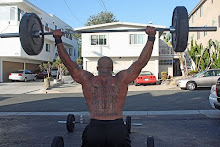
Going beyond parallel or going “rock bottom” is definitely optional. Getting to parallel is important, however. Fred “Dr. Squat” Hatfield writes, “You should learn how to go down into the squat position low enough. The top of your thighs should be about parallel to the floor or slightly lower, in a well-executed squat. Higher than that, and you’re losing some of the benefit to your quads.”There are no gender-based differences in optimal squatting depth, but there are anatomical differences from person to person: For example, long femurs can put greater stress on the knee joint while providing poor leverage, making it more difficult to do full squats. (When was the last time you saw a 6' 7" NBA star doing rock-bottom heavy squats?). Personally, I have very short thighs and I am completely comfortable squatting totally rock bottom, until my calves and hamstrings are touching.Going to parallel is the general recommendation, and your results will be fine just going to parallel. Parallel is defined as where the tops of your thighs are parallel to the floor. I believe I get better results (hypertrophy-wise) from breaking parallel, but that’s just my personal opinion.Being unable to reach parallel or just below parallel means that yes, you probably need to work on your flexibility. In particular, look at ankle/achilles flexibility. It’s not just quad, hamstring and hip flexibility you need to do a full parallel squat. In fact, the ankle is often where the problem often lies.In the meantime, as your flexibility gradually improves, what you can also do is experiment with stance width. If you lack ankle flexibility and lose your balance squatting narrow, a wider stance will help. Very narrow squats require very flexible joints; otherwise you must bend too far forward to maintain your center of gravity
Here’s another tip: Never take advice from anyone “more messed up than you are.” Everybody wants to be an expert these days, but I’d warn you to be cautious of friends, training partners or even personal trainers unless you know they are both a) qualified and b) walk the walk. Lots of people talk the talk, but very few walk the walk. Only take advice from people who walk the walk. If I wanted to take advice on squatting to help me gain lower body muscle mass, I’d ask Tom Platz. If I wanted to get advice on squatting to help me squat heavier weights, I’d ask Dr. Squat Fred Hatfield, Ed Coan or Louie Simmons.By the way, full (below parallel) barbell squats are completely safe when done properly. In fact, the National Strength and Conditioning Association (NSCA) released a position statement on this subject, called “The Squat Exercise in Athletic Conditioning.”
In a nutshell, here’s what it says:Correctly performed squats are not only safe, but they may actually PREVENT knee injuries The squat can enhance performance in many sports Overtraining and fatigue related injuries do occur with squats, but the chance of getting injured is reduced by following the established principles of resistance training program design. The squat is NOT detrimental to knee joint stability when performed correctly. Weight training exercises, including the squat, strengthen connective tissue, including muscles, bones, ligaments and tendons. There are different styles of squat performance and proper form requires the muscles to be conditioned for that form. Bouncing out of the bottom may help you get through the sticking point more easily, but this may be injurious to the knee. Squatting puts stress on the back, but injury potential is low if proper technique is observed. Reports of squat induced injuries are conflicting and inconclusive. Some may be based on biased samples. Other injuries may have been caused by other factors including improper technique, pre-existing injuries and structural abnormalities, other physical activities, fatigue or overtrainingThe bottom line is that parallel squats and or full squats are effective and safe when performed properly. Flexibility is required and form is everything. Your form must be impeccable. Most injuries come from poor form.
Proper form includes:Rigid torso Slow (controlled) descent Inhale on descent and hold breath momentarily until you reverse direction and are through the sticking point. Then take deep breath again before next rep. Concentrate on pushing with the quads Elbows should point to the floor or just slightly back, not rearwards You must be fully warmed up before attempting heavy weights Stretch lightly before squatting Develop sufficient abdominal strength Develop sufficient lower back strength Develop sufficient ankle, calf, quadricep, hamstring, and hip flexibility
Perfect your form before going heavy Do not become overly dependent on belts or wrapsKeep after it. NOTHING in the gym will give you a greater return for your efforts than free weight barbell squats – both for strength and physique. If you’re physically ABLE to squat, and you’re not squatting, then you’re only getting a fraction of the results you could be getting.



No comments:
Post a Comment